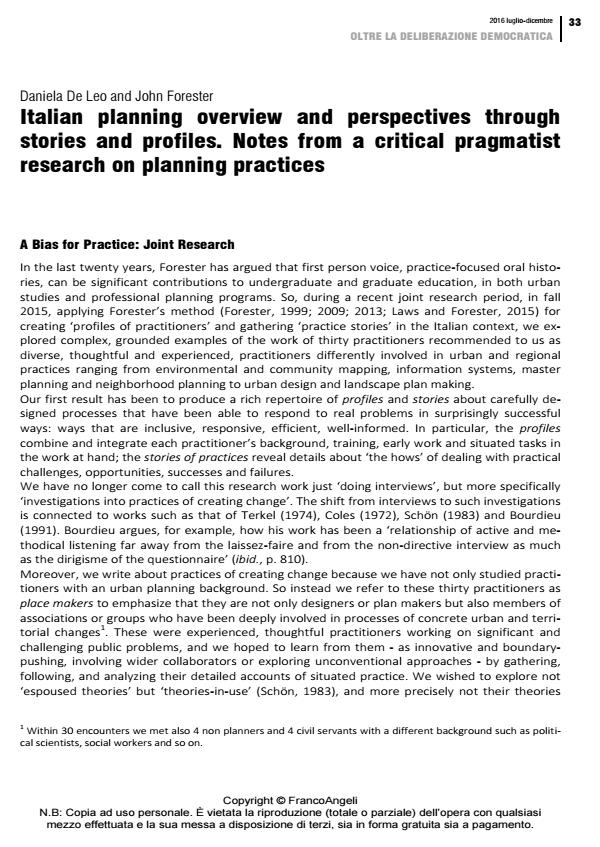Italian planning overview and perspectives through stories and profiles. Notes from a critical pragmatist research on planning practices A Bias
Titolo Rivista CRIOS
Autori/Curatori Daniela De Leo, John Forester
Anno di pubblicazione 2016 Fascicolo 2016/12
Lingua Inglese Numero pagine 8 P. 33-40 Dimensione file 835 KB
DOI 10.3280/CRIOS2016-012004
Il DOI è il codice a barre della proprietà intellettuale: per saperne di più
clicca qui
Qui sotto puoi vedere in anteprima la prima pagina di questo articolo.
Se questo articolo ti interessa, lo puoi acquistare (e scaricare in formato pdf) seguendo le facili indicazioni per acquistare il download credit. Acquista Download Credits per scaricare questo Articolo in formato PDF

FrancoAngeli è membro della Publishers International Linking Association, Inc (PILA)associazione indipendente e non profit per facilitare (attraverso i servizi tecnologici implementati da CrossRef.org) l’accesso degli studiosi ai contenuti digitali nelle pubblicazioni professionali e scientifiche
During a recent joint research period, applying Forester’s method for creating "profiles of practitioners" and gathering "practice stories" in the Italian context, the authors explored the work of thirty Italian practitioners. They have come to call this research work no longer just "doing interviews" but more specifically "investigations into practices of creating change". By exploring not "espoused theories" but "theories-in-use", the authors have tried to close the epistemological and political gap between pragmatism and critical theory in the direction of a "critical pragmatism". Moreover, by considering the direct voices of these Italian practitioners, authors find relevant and pressing to discuss research outcomes in this journal where challenges about planning perspectives and the overcome of deliberative democracy are under discussion
- Bologna, deleghe e pratiche composite Patrizia Gabellini, in TERRITORIO 82/2017 pp.40
DOI: 10.3280/TR2017-082009
Daniela De Leo, John Forester, Italian planning overview and perspectives through stories and profiles. Notes from a critical pragmatist research on planning practices A Bias in "CRIOS" 12/2016, pp 33-40, DOI: 10.3280/CRIOS2016-012004